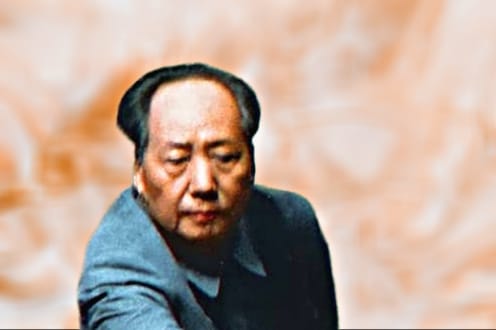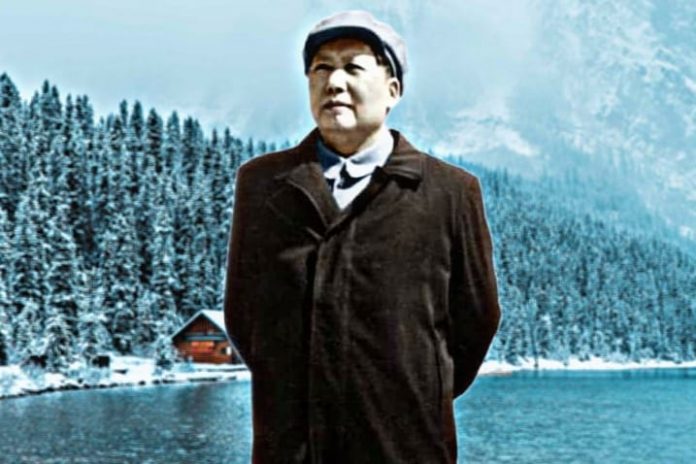Mao Zedong, one of the most influential figures of the 20th century, was a key architect of modern China. His leadership, ideology, and policies reshaped the Chinese nation and left a lasting impact on global politics. Mao Zedong role as the founding father of the People’s Republic of China (PRC) and his far-reaching influence on communism, economic policies, and geopolitics is a subject of both admiration and controversy. This article delves deep into the life, ideology, political career, and legacy of Mao Zedong, exploring how he transformed China and his global impact.
Early Life and Education: Roots of a Revolutionary
Mao Zedong was born on December 26, 1893, in Shaoshan, a small village in Hunan Province. His family belonged to the peasant class, and Mao’s early life was shaped by the hardship and struggles faced by rural China. Mao’s father, Mao Yichang, was a farmer who tried to improve the family’s economic standing through hard work. Mao’s mother, Wen Qimei, came from a well-respected family, but her influence was less apparent during his youth.
Mao Zedong was a diligent student and attended several schools during his early years. He developed a keen interest in traditional Chinese literature, Confucian classics, and military strategy. However, the fall of the Qing Dynasty in 1911, along with the subsequent turmoil in China, catalyzed Mao’s interest in political movements. The Chinese Empire was replaced by the Republic of China, which quickly became embroiled in political instability, warlordism, and foreign imperialism.
Mao Zedong attended Changsha’s First Normal School, where he was exposed to Western thought, including Marxism and socialism. This period marked the beginning of his intellectual journey towards revolution. It was during this time that Mao Zedong first encountered the idea of class struggle, a theme that would dominate his later political career.
Joining the Communist Party: The Rise of a Revolutionary Leader

In the early 1920s, China was in chaos, with regional warlords and foreign powers dividing the nation. Amidst this turmoil, Mao began to align himself with revolutionary ideologies. His journey toward communism began in 1920 when he joined the Chinese Communist Party (CCP), founded in 1921 in Shanghai with the support of the Soviet Union.
Mao Zedong first major political contribution was his involvement in the struggle against the Kuomintang (KMT), the Nationalist Party led by Sun Yat-sen and later Chiang Kai-shek. Initially, the CCP cooperated with the KMT in the 1920s, hoping to build a unified front to combat warlordism and imperialist forces. However, this cooperation ended in 1927 when Chiang Kai-shek launched a violent purge of communists, known as the “White Terror.” Mao Zedong, who had been active in organizing peasants and workers in rural Hunan, found himself at the forefront of the CCP’s efforts to build a base of support in rural China.
In the late 1920s and early 1930s,Mao Zedong influence within the CCP grew significantly, especially after he led the Red Army in a series of successful campaigns against the KMT. This culminated in the establishment of a communist base in Jiangxi Province, where Mao solidified his control over the CCP. The base, known as the Jiangxi Soviet, became the center of Mao political thought, which would later form the core of his revolutionary ideology: Maoism.
The Long March: A Defining Moment in Chinese Communist History

One of the most defining moments in Mao Zedong career was the Long March (1934-1935), a remarkable military and political maneuver that ensured the survival of the CCP. Faced with overwhelming opposition from the KMT, the Red Army was forced to retreat from their base in Jiangxi. Over the course of the Long March, the CCP relocated to the remote northern regions of China, covering more than 9,000 kilometers. It is estimated that only about 20,000 out of 100,000 Red Army soldiers survived the arduous journey.
Despite the tremendous losses, the Long March became a symbol of the CCP’s resilience and determination. Mao Zedong emerged from the event as the unquestioned leader of the party. The success of the Long March helped solidify Mao’s control over the CCP, and it marked a turning point in the Chinese revolution. Mao’s leadership during this period showcased his ability to adapt to changing circumstances and make bold decisions, establishing him as a master strategist.
The Chinese Civil War: Victory of the Communist Party
The Chinese Civil War (1945-1949) was the final confrontation between the CCP and the KMT, which was led by Chiang Kai-shek. After Japan’s defeat in World War II, the KMT and CCP resumed fighting for control of China. While the KMT had international support from the United States, the CCP, under Mao’s leadership, had the backing of the rural population, which was crucial to the ultimate success of the communist movement.
Mao Zedong strategy during the civil war was to focus on mobilizing the peasant population. By promising land reforms, which included redistributing land from landlords to peasants, Mao Zedong built a broad base of support among China’s rural poor. In contrast, the KMT struggled to maintain support, as corruption and economic mismanagement plagued their government.
By 1949, the CCP had gained control of most of China, and the KMT was forced to retreat to Taiwan. On October 1, 1949, Mao Zedong declared the founding of the People’s Republic of China (PRC) in Beijing, a monumental moment in Chinese history. The victory of the CCP marked the end of over a century of imperialism and civil war and signified the triumph of communist ideology in China.
Mao Zedong’s Leadership: Vision and Policies

Mao Zedong leadership of China was marked by ambitious and, at times, controversial policies aimed at transforming China into a socialist state. His leadership style was authoritarian, and he sought to centralize power in the hands of the Communist Party, with himself at the core.
Land Reform and Socialization of Agriculture
One of Mao Zedong first major policies after the founding of the PRC was the implementation of land reform. The government redistributed land from wealthy landlords to peasants, significantly altering the social structure of rural China. The land reform program was accompanied by the execution of thousands of landlords accused of exploiting the peasantry. While the reform helped end feudal land ownership and improved the conditions of many peasants, it also caused social upheaval and led to violent class struggles.
In 1958, Mao Zedong introduced the Great Leap Forward, a radical attempt to rapidly industrialize China by collectivizing agriculture and establishing large communes. The policy aimed to increase agricultural production and modernize the country’s economy. However, the Great Leap Forward ended in disaster. Poor planning, forced collectivization, and natural disasters resulted in widespread famine, leading to the deaths of millions of people. The failure of the Great Leap Forward severely damaged Mao’s reputation, but he remained in power.
The Cultural Revolution: Radical Social Change
In 1966, Mao Zedong launched the Cultural Revolution, an attempt to reassert his control over the Chinese Communist Party and to purge China of what he considered bourgeois elements. The Cultural Revolution was marked by mass mobilizations, violent campaigns against perceived “class enemies,” and widespread persecution of intellectuals, teachers, and political rivals.
The Red Guards, a student-led paramilitary group, were mobilized to attack those who were deemed counter-revolutionary. The Cultural Revolution led to a period of social chaos, during which millions of people were sent to labor camps or executed. The economy was severely disrupted, and the political system was thrown into disarray. Mao’s efforts to purge Chinese society of “counter-revolutionary” elements left an indelible scar on the country.
Mao Zedong Legacy: A Complex and Divisive Figure
Mao Zedong legacy is a deeply divisive topic. To many, he is seen as the founding father of modern China and a leader who liberated the country from imperialism and feudalism. Under his rule, China underwent profound social and economic transformations, including land redistribution, improvements in education and healthcare, and the promotion of gender equality.
However, Mao Zedong policies also caused immense suffering. The failures of the Great Leap Forward and the Cultural Revolution resulted in millions of deaths and widespread societal trauma. Mao Zedong authoritarianism and reliance on political purges left a legacy of fear and repression, and his rule left China with many unresolved social and economic issues.
In the years following Mao Zedong death in 1976, China underwent significant reforms under the leadership of Deng Xiaoping, who shifted the country’s focus towards market-oriented economic policies and opened China to the global economy. Mao’s legacy was officially reassessed, with some aspects of his rule being criticized, while others were celebrated as part of China’s revolutionary history.
Conclusion: Mao Zedong and China’s Transformation
Mao Zedong was a monumental figure in world history, whose vision and leadership fundamentally transformed China. His impact on Chinese society, politics, and culture is undeniable, whether one views him as a liberator or a tyrant. Mao’s legacy continues to influence China today, as the country remains under the rule of the Communist Party, which he founded.
Mao Zedong life and career are a testament to the complexities of revolutionary leadership and the transformative power of political ideology. While his policies led to both progress and catastrophe, his role in shaping the trajectory of China’s modern history cannot be overstated. Mao Zedong remains one of the most significant and controversial figures in world history, embodying both the hopes and the tragedies of the 20th century.

